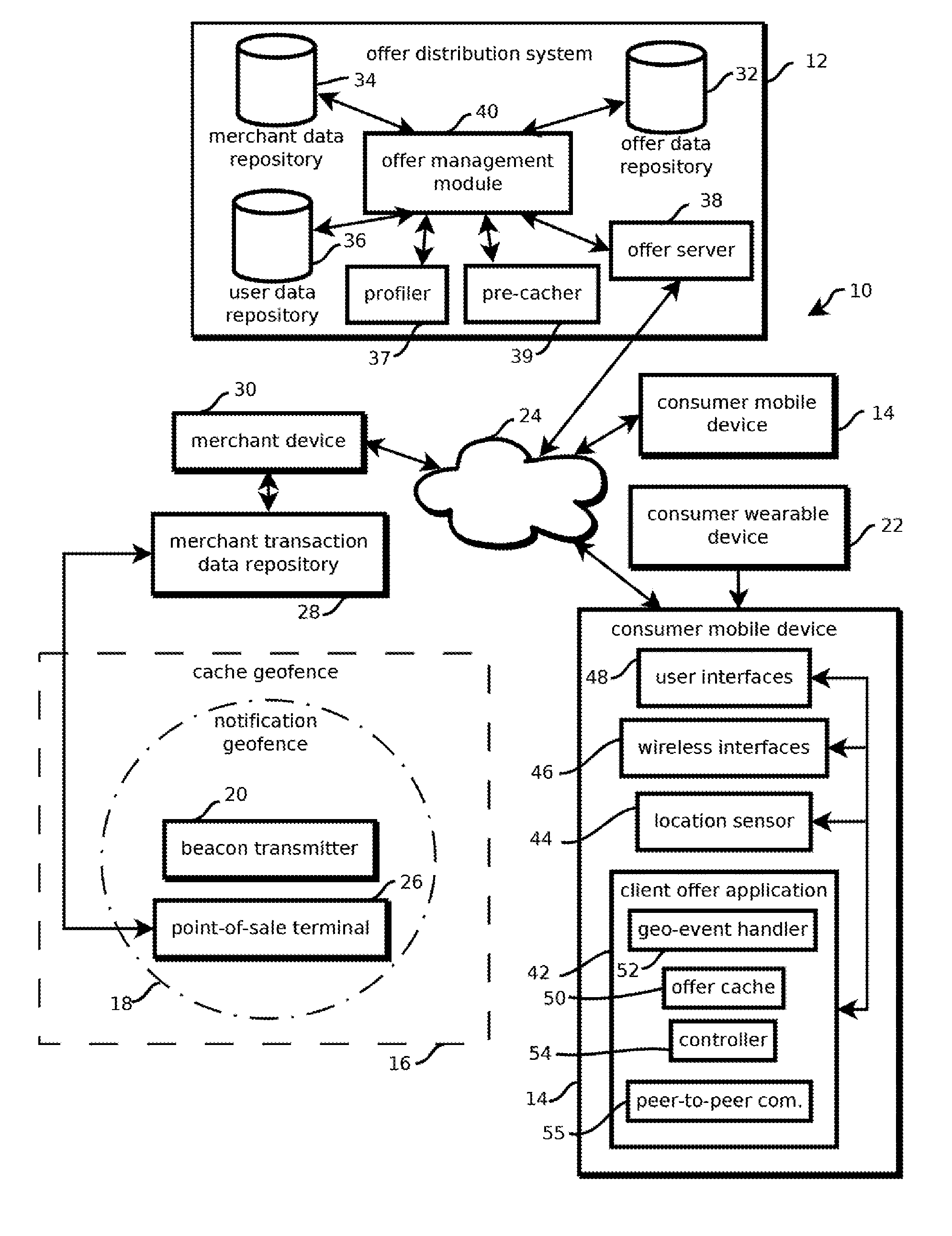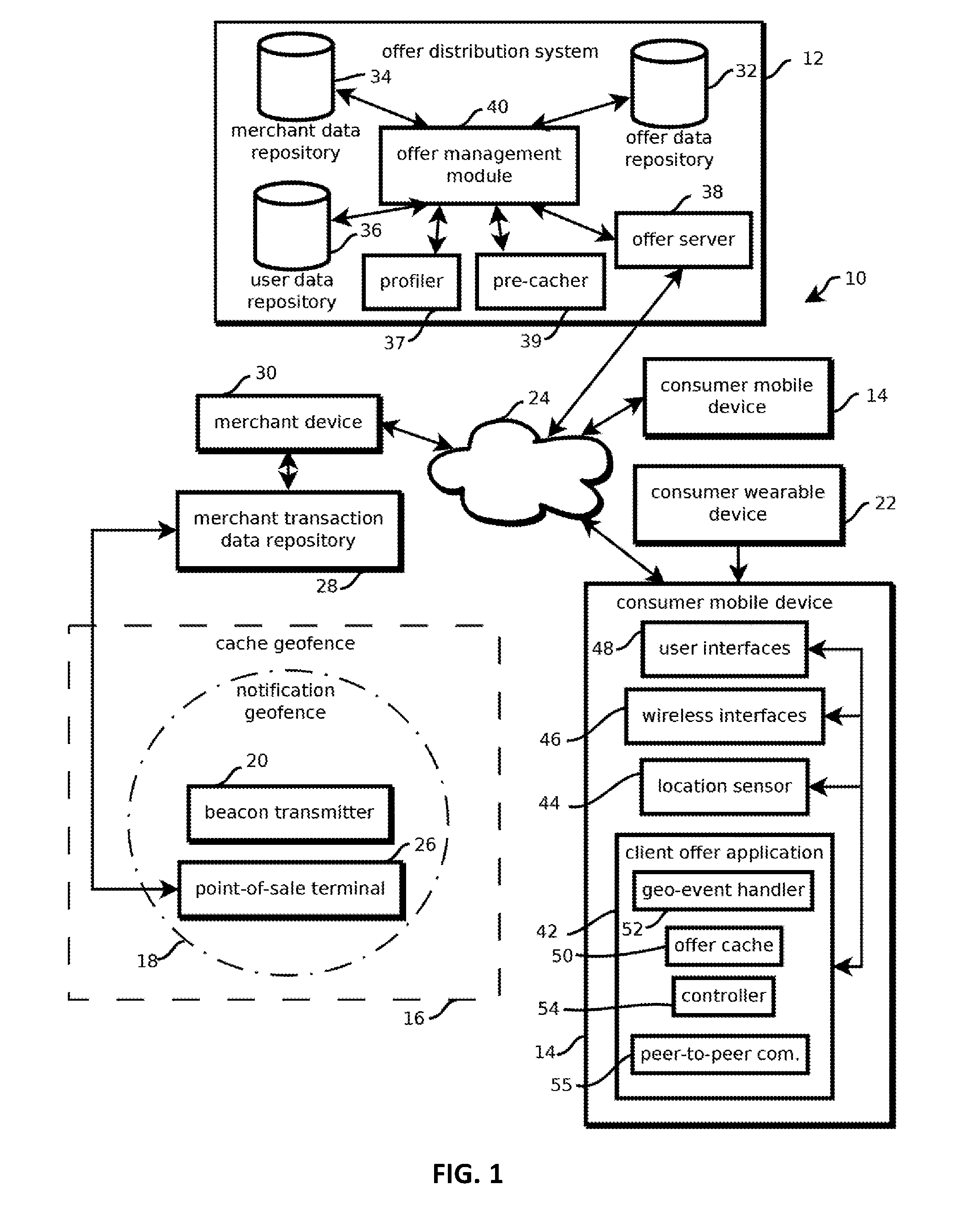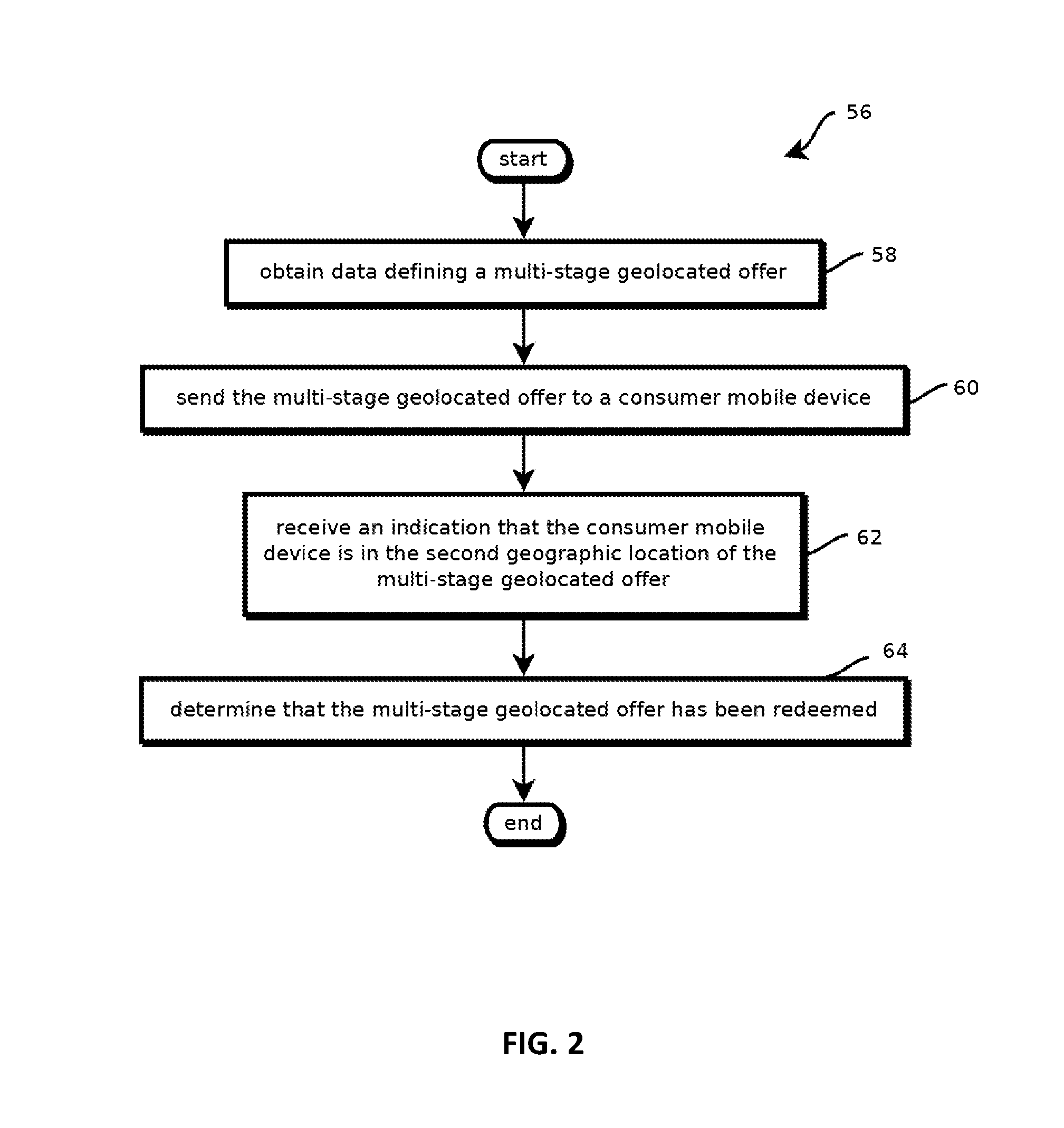Peer-to-peer geotargeting content with ad-hoc mesh networks
a technology of mesh network and content, applied in the field of content distribution, can solve the problems of affecting the delivery of content, geolocation sensing, affecting the user experience, etc., and achieve the effect of reducing the cost of installation and maintenance of both beacons, and facilitating the delivery of conten
- Summary
- Abstract
- Description
- Claims
- Application Information
AI Technical Summary
Benefits of technology
Problems solved by technology
Method used
Image
Examples
embodiment 1
2. The medium of embodiment 1, wherein the operations comprise: receiving, with the first mobile computing device, a request for content, including at least the given content item, from the second mobile computing device, wherein the request for content is transmitted wirelessly directly from the second mobile computing device to the first mobile computing device; and in response to the request for content, transmitting responsive content wirelessly directly from the first mobile computing device to the second mobile computing device.
3. The medium of any of embodiments 1-2, wherein: the responsive content is signed with a cryptographic signature before being obtained by the first mobile computing device by a remote computing device different from both the first mobile computing device and the second mobile computing device; and the cryptographic signature is transmitted by the first mobile computing device to the second mobile computing device.
4. The medium of any of embodiments 1-3...
embodiment 5
6. The medium of embodiment 5, wherein adjusting transmission comprises ceasing repeated transmissions of the wireless signal upon determining that the distance exceeds a threshold.
7. The medium of embodiment 5, wherein adjusting transmission comprises decreasing transmission power of the wireless signal in response to an increase in the distance.
8. The medium of any of embodiments 1-7, wherein the operations comprise: receiving the wireless signal with the second mobile computing device; retransmitting at least part of data encoded in the wireless signal from the second mobile computing device wirelessly directly to a third mobile computing device; and transmitting from the second mobile computing device wirelessly directly to the third mobile computing device a value indicating that the at least part of the data has been retransmitted at least once.
9. The medium of any of embodiments 1-8, wherein the content items are obtained via a cellular transceiver of the first mobile computi...
embodiment 13
14. The medium of embodiment 13, wherein: the wireless signal is indicative of the given content item by identifying a retail store to which the given content item pertains, wherein the plurality of content items include a subset of content items pertaining to the retail store, and the wireless signal is also indicative of the subset of content items.
15. The medium of any of embodiments 1-14, wherein: obtaining a plurality of content items comprises: sending, with the first mobile device, a request for the plurality of content items to a remote offer distribution system, the request identifying an geographic location of the first mobile device; and receiving a plurality of offers selected based on the geographic location; and receiving, with the first mobile computing device, data indicative of a user interaction with the given one of the content items comprises: displaying at least some of the offers with the first mobile device; and receiving a user request to redeem one of the di...
PUM
 Login to View More
Login to View More Abstract
Description
Claims
Application Information
 Login to View More
Login to View More - R&D
- Intellectual Property
- Life Sciences
- Materials
- Tech Scout
- Unparalleled Data Quality
- Higher Quality Content
- 60% Fewer Hallucinations
Browse by: Latest US Patents, China's latest patents, Technical Efficacy Thesaurus, Application Domain, Technology Topic, Popular Technical Reports.
© 2025 PatSnap. All rights reserved.Legal|Privacy policy|Modern Slavery Act Transparency Statement|Sitemap|About US| Contact US: help@patsnap.com



